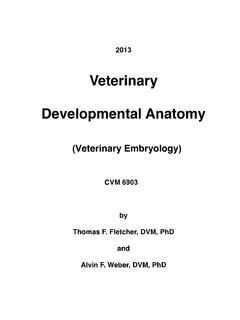Transcription of Chapter 10
1 162 BIOLOGYAre you aware that all organisms, even the largest, start their life from asingle cell? You may wonder how a single cell then goes on to form suchlarge organisms. Growth and reproduction are characteristics of cells ,indeed of all living organisms. All cells reproduce by dividing into two,with each parental cell giving rise to two daughter cells each time theydivide. These newly formed daughter cells can themselves grow and divide,giving rise to a new cell population that is formed by the growth anddivision of a single parental cell and its progeny. In other words, suchcycles of growth and division allow a single cell to form a structureconsisting of millions of CYCLECell division is a very important process in all living organisms. Duringthe division of a cell, DNA replication and cell growth also take place. Allthese processes, , cell division, DNA replication, and cell growth, hence,have to take place in a coordinated way to ensure correct division andformation of progeny cells containing intact genomes.
2 The sequence ofevents by which a cell duplicates its genome, synthesises the otherconstituents of the cell and eventually divides into two daughter cells istermed cell cycle . Although cell growth (in terms of cytoplasmic increase)is a continuous process, DNA synthesis occurs only during one specificstage in the cell cycle . The replicated chromosomes (DNA) are thendistributed to daughter nuclei by a complex series of events during celldivision. These events are themselves under genetic cycle AND CELL DIVISIONCHAPTER ofMeiosis2015-16(19/01/2015) cell cycle AND CELL of Cell CycleA typical eukaryotic cell cycle is illustrated byhuman cells in culture. These cells divide oncein approximately every 24 hours (Figure ).However, this duration of cell cycle can varyfrom organism to organism and also from celltype to cell type. Yeast for example, can progressthrough the cell cycle in only about 90 cell cycle is divided into two basicphases:lllllInterphaselllllM Phase ( mitosis phase)The M Phase represents the phase when theactual cell division or mitosis occurs and theinterphase represents the phase between twosuccessive M phases.
3 It is significant to notethat in the 24 hour average duration of cellcycle of a human cell, cell division proper lastsfor only about an hour. The interphase lastsmore than 95% of the duration of cell M Phase starts with the nuclear division, corresponding to theseparation of daughter chromosomes (karyokinesis) and usually endswith division of cytoplasm (cytokinesis). The interphase, though calledthe resting phase, is the time during which the cell is preparing for divisionby undergoing both cell growth and DNA replication in an orderly interphase is divided into three further phases:lllllG1 phase (Gap 1)lllllS phase (Synthesis)lllllG2 phase (Gap 2) G1 phase corresponds to the interval between mitosis and initiationof DNA replication. During G1 phase the cell is metabolically active andcontinuously grows but does not replicate its DNA. S or synthesis phasemarks the period during which DNA synthesis or replication takes this time the amount of DNA per cell doubles.
4 If the initial amountof DNA is denoted as 2C then it increases to 4C. However, there is noincrease in the chromosome number; if the cell had diploid or 2n numberof chromosomes at G1, even after S phase the number of chromosomesremains the same, , animal cells , during the S phase, DNA replication begins in thenucleus, and the centriole duplicates in the cytoplasm. During the G2phase, proteins are synthesised in preparation for mitosis while cell do plants andanimals continue togrow all their lives?Do all cells in a plantdivide all the time?Do you think all cellscontinue to divide inall plants andanimals? Can youtell the name and thelocation of tissueshaving cells thatdivide all their life inhigher plants? Doanimals have similarmeristematictissues?Figure A diagrammatic view of cell cycleindicating formation of two cellsfrom one cellM Phase2015-16(19/01/2015)164 BIOLOGYSome cells in the adult animals do not appear to exhibit division ( ,heart cells ) and many other cells divide only occasionally, as needed toreplace cells that have been lost because of injury or cell death.
5 Thesecells that do not divide further exit G1 phase to enter an inactive stagecalled quiescent stage (G0) of the cell cycle . cells in this stage remainmetabolically active but no longer proliferate unless called on to do sodepending on the requirement of the animals, mitotic cell division is only seen in the diploid somaticcells. Against this, the plants can show mitotic divisions in both haploidand diploid cells . From your recollection of examples of alternation ofgenerations in plants ( Chapter 3) identify plant species and stages at whichmitosis is seen in haploid PHASEThis is the most dramatic period of the cell cycle , involving a majorreorganisation of virtually all components of the cell. Since the number ofchromosomes in the parent and progeny cells is the same, it is also called asequational division. Though for convenience mitosis has been dividedinto four stages of nuclear division, it is very essential to understand that celldivision is a progressive process and very clear-cut lines cannot be drawnbetween various stages.
6 mitosis is divided into the following four which is the first stage of mitosis follows the S and G2 phases ofinterphase. In the S and G2 phases the new DNA molecules formed are notdistinct but intertwined. Prophase is marked by the initiation of condensationof chromosomal material. The chromosomal material becomes untangledduring the process of chromatin condensation (Figure a). The centriole,which had undergone duplication during S phase of interphase, now beginsto move towards opposite poles of the cell. The completion of prophase canthus be marked by the following characteristic events:lllllChromosomal material condenses to form compact mitoticchromosomes. Chromosomes are seen to be composed of twochromatids attached together at the of the assembly of mitotic spindle, the microtubules, theproteinaceous components of the cell cytoplasm help in have studiedmitosis in onion roottip cells . It has 16chromosomes ineach cell.
7 Can youtell how manychromosomes willthe cell have at G1phase, after S phase,and after M phase?Also, what will be theDNA content of thecells at G1, after Sand at G2, if thecontent after Mphase is 2C?2015-16(19/01/2015) cell cycle AND CELL DIVISION165 cells at the end of prophase, when viewed under themicroscope, do not show golgi complexes, endoplasmicreticulum, nucleolus and the nuclear complete disintegration of the nuclear envelope marksthe start of the second phase of mitosis , hence thechromosomes are spread through the cytoplasm of the this stage, condensation of chromosomes is completedand they can be observed clearly under the microscope. Thisthen, is the stage at which morphology of chromosomes ismost easily studied. At this stage, metaphase chromosomeis made up of two sister chromatids, which are held togetherby the centromere (Figure b). Small disc-shapedstructures at the surface of the centromeres are calledkinetochores.
8 These structures serve as the sites of attachmentof spindle fibres (formed by the spindle fibres) to thechromosomes that are moved into position at the centre ofthe cell. Hence, the metaphase is characterised by all thechromosomes coming to lie at the equator with one chromatidof each chromosome connected by its kinetochore to spindlefibres from one pole and its sister chromatid connected byits kinetochore to spindle fibres from the opposite pole ( b). The plane of alignment of the chromosomes atmetaphase is referred to as the metaphase plate. The keyfeatures of metaphase are:lllllSpindle fibres attach to kinetochores are moved to spindle equator and getaligned along metaphase plate through spindle fibresto both the onset of anaphase, each chromosome arranged atthe metaphase plate is split simultaneously and the twodaughter chromatids, now referred to as chromosomes ofthe future daughter nuclei, begin their migration towardsthe two opposite poles.
9 As each chromosome moves awayfrom the equatorial plate, the centromere of eachchromosome is towards the pole and hence at the leadingedge, with the arms of the chromosome trailing behind(Figure c). Thus, anaphase stage is characterised byFigure a and b : A diagrammaticview of stages in mitosis2015-16(19/01/2015)166 BIOLOGYthe following key events:lllllCentromeres split and chromatids move to opposite the beginning of the final stage of mitosis , , telophase,the chromosomes that have reached their respective polesdecondense and lose their individuality. The individualchromosomes can no longer be seen and chromatin materialtends to collect in a mass in the two poles (Figure d).This is the stage which shows the following key events:lllllChromosomes cluster at opposite spindle poles and theiridentity is lost as discrete envelope assembles around the , golgi complex and ER accomplishes not only the segregation of duplicatedchromosomes into daughter nuclei (karyokinesis), but thecell itself is divided into two daughter cells by a separateprocess called cytokinesis at the end of which cell division iscomplete (Figure e).
10 In an animal cell, this is achievedby the appearance of a furrow in the plasma furrow gradually deepens and ultimately joins in thecentre dividing the cell cytoplasm into two. Plant cellshowever, are enclosed by a relatively inextensible cell wall,thererfore they undergo cytokinesis by a differentmechanism. In plant cells , wall formation starts in the centreof the cell and grows outward to meet the existing lateralwalls. The formation of the new cell wall begins with theformation of a simple precursor, called the cell-plate thatrepresents the middle lamella between the walls of twoadjacent cells . At the time of cytoplasmic division, organelleslike mitochondria and plastids get distributed between thetwo daughter cells . In some organisms karyokinesis is notfollowed by cytokinesis as a result of which multinucleatecondition arises leading to the formation of syncytium ( ,liquid endosperm in coconut).Figure c to e : A diagrammaticview of stages in Mitosis2015-16(19/01/2015) cell cycle AND CELL of MitosisMitosis or the equational division is usually restricted to the diploid cellsonly.












